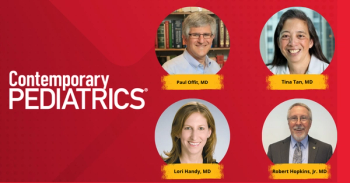
Why you must discuss mental health coverage with patients
Coverage gaps can have dire consequences on access to treatment and medications for children and adolescents with mental health problems, according to a new report.
Consistency is key to adequate mental health care, but researchers say children and adolescents who experience gaps in their Medicaid coverage also face disruptions in their care.
Researchers from the University of Louisville in Kentucky analyzed predictors of gaps in insurance coverage and the impact of those gaps on children receiving Medicaid using Kentucky Medicaid records from 2012 to 2014 for children aged 1 to 17 years. Any gaps of 45 days or more were included in the analysis. An abstract related to the teamâs research was released at the
William D Lohr, MD, of the University of Louisville and one of the reportâs authors, says the team was not surprised to find that foster situations were proactive in coverage, with children in foster care more likely to be continuously enrolled in Medicaid.
What was surprising, he says, was a higher incidence of adolescent males who were not receiving medications and were disruptive or aggressive. Whether they were noncompliant in the medications or did not receive them for another reason was unclear, Lohr says.
Overall, 78.8% of children had no gaps in insurance coverage, according to the analysis. Those that did experience gaps in coverage, however, were less likely to be prescribed psychotropic or antipsychotic medications, or receive advocated psychosocial therapy.
âGaps in insurance coverage may have detrimental impacts for managing Medicaid children with mental disorders,â the research team wrote in the abstract. âGaps in coverage lead to less prescribing of medication and less psychosocial therapy being employed, which has been well established to be beneficial. In addition, advocated follow up (metabolic monitoring) is detrimentally impacted. Establishing ways to decrease gaps in insurance coverage is needed.â
Lohr says he hopes that the report increases awareness among physicians about the challenges children and adolescents face in getting the mental health care treatment and medication they need.
âWe hope that pediatricians will be more aware of certain populations, specifically older males. Take time to research with families and find out where they are with their coverage and guide them,â Lohr says.
Thereâs a disconnect between what families and physicians think should happen after a mental health care visit, and what families are able to maintain, Lohr says. Many families are also reluctant to discuss their ability to pay for care, and itâs up to physicians to bring up the subject, he says.
Several reforms are currently being considered, and a
However, according to the
A recent report from
Access is also a problem, and one that varies greatly across the country. According to MHA, there were about 250 individuals per mental health provider in states like Massachusetts, Maine, and Vermont compared to 1100 individuals per mental health providers in states like West Virginia, Texas, and Alabama.
Groups like the National Council offer a number of free resources to help support mental health services, particularly where funding and access are limited. The organization is working to spread the word about its
Newsletter
Access practical, evidence-based guidance to support better care for our youngest patients. Join our email list for the latest clinical updates.







